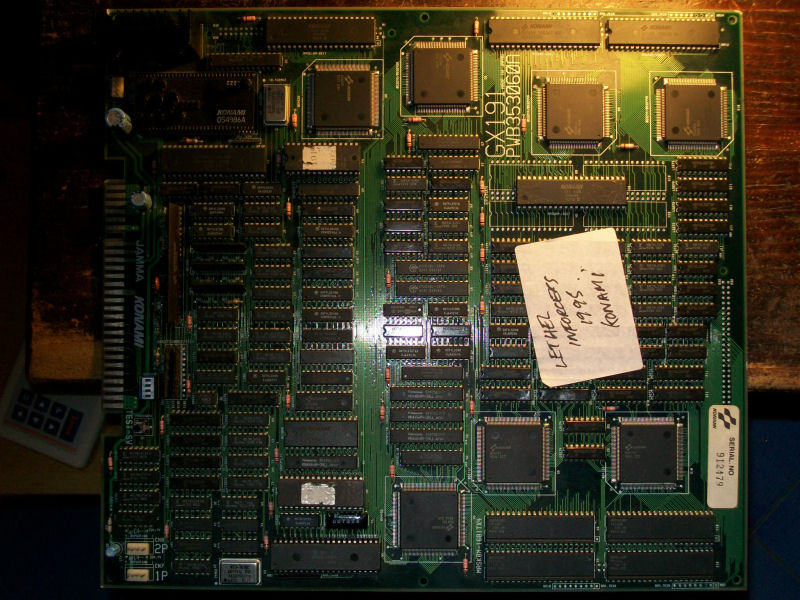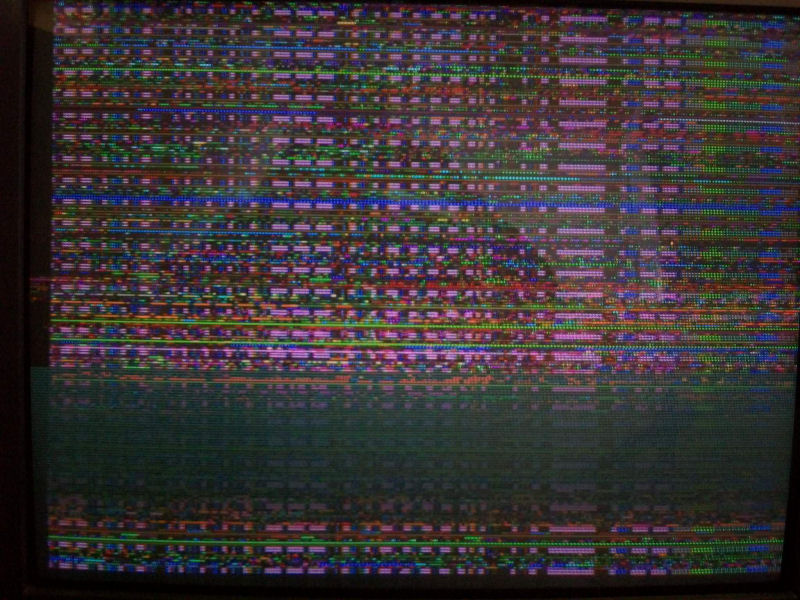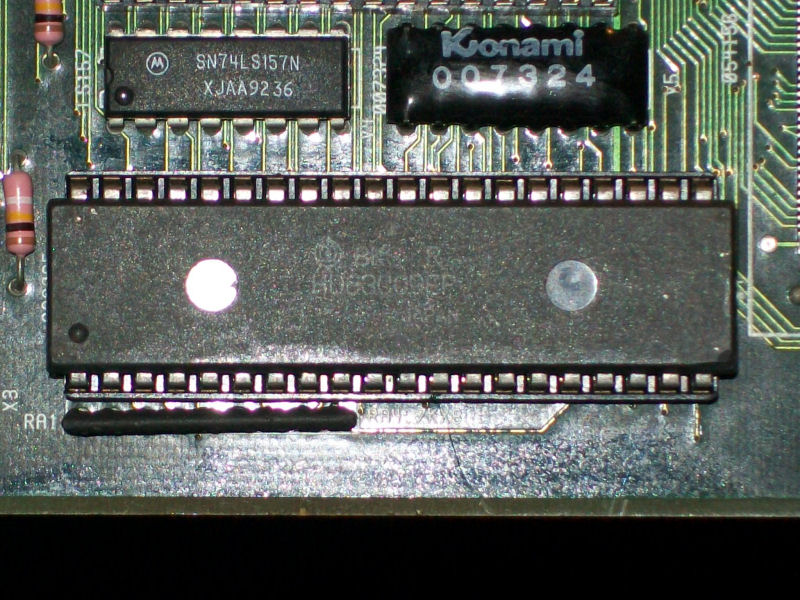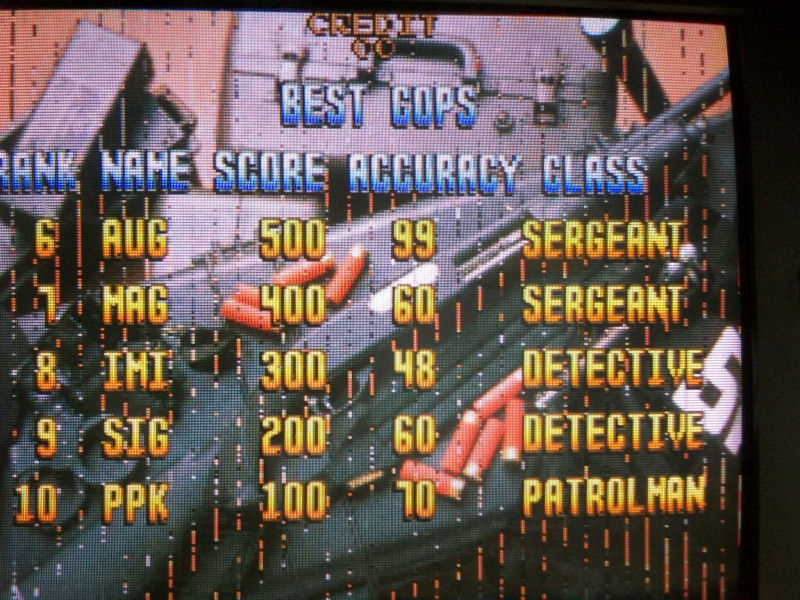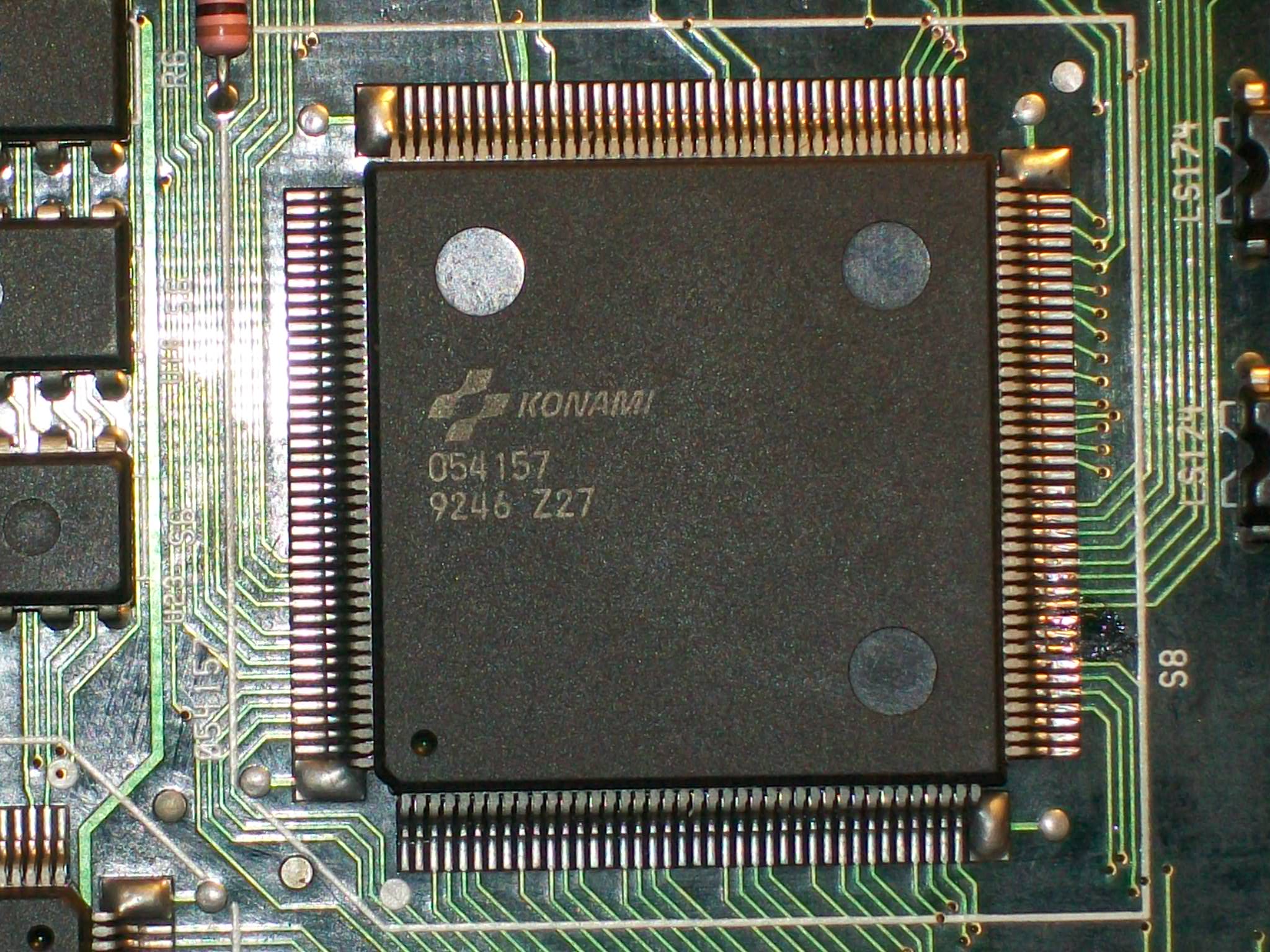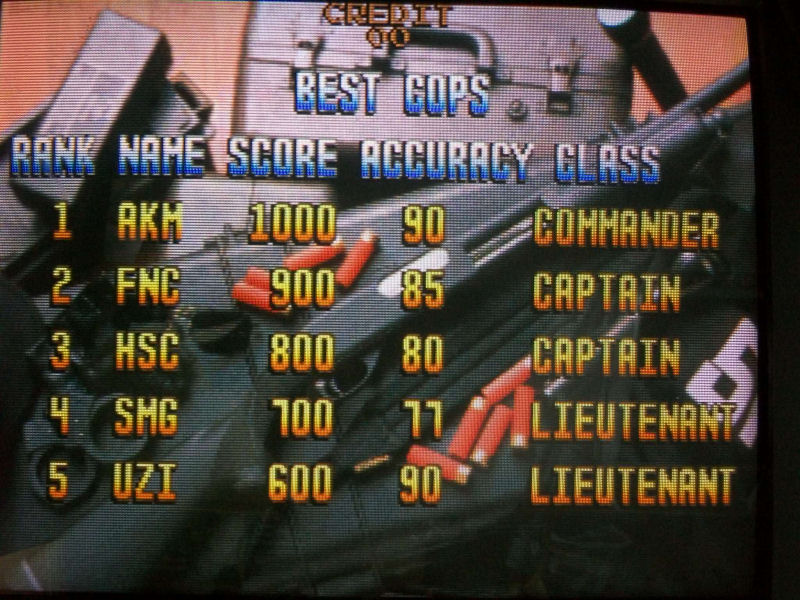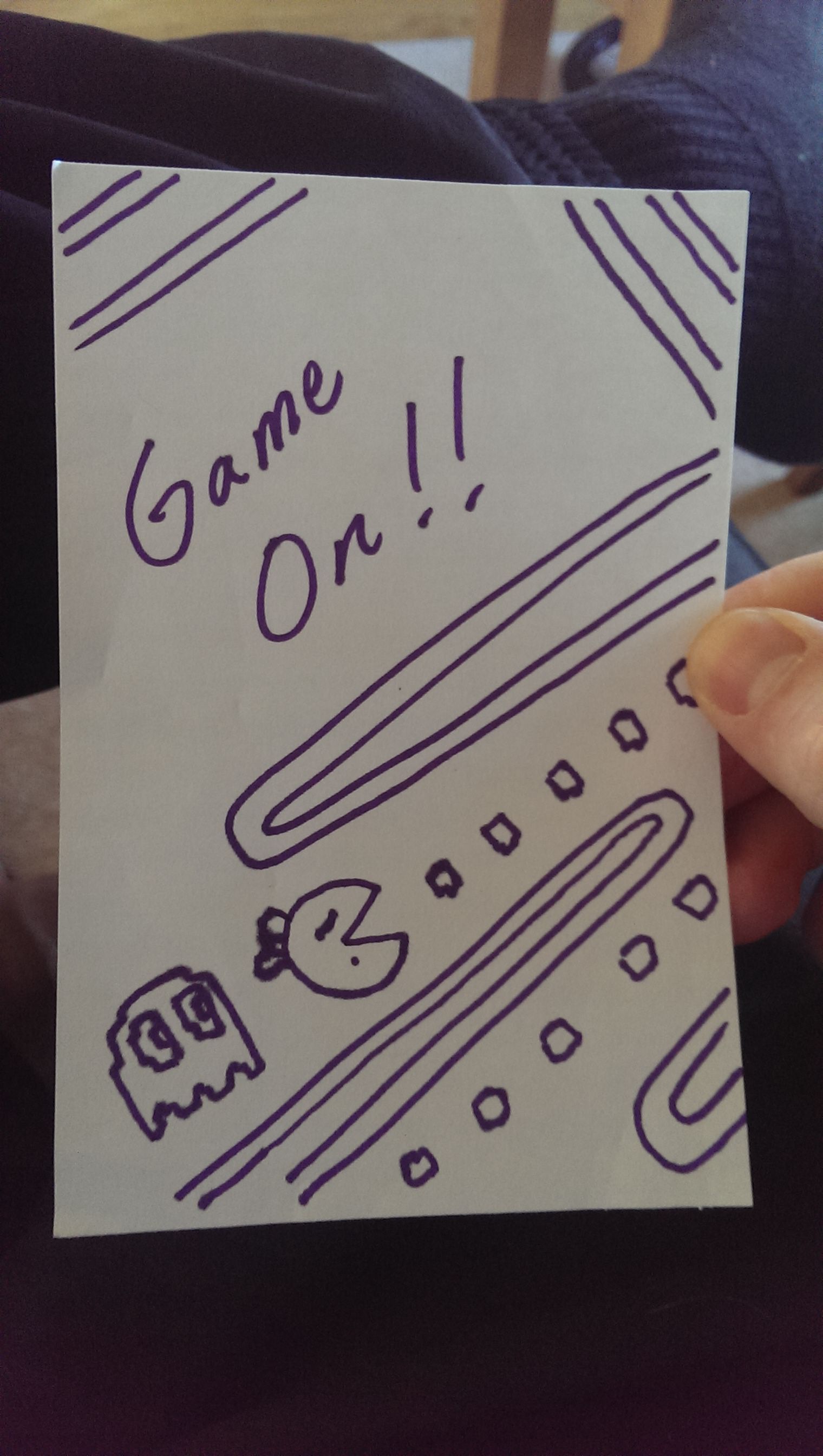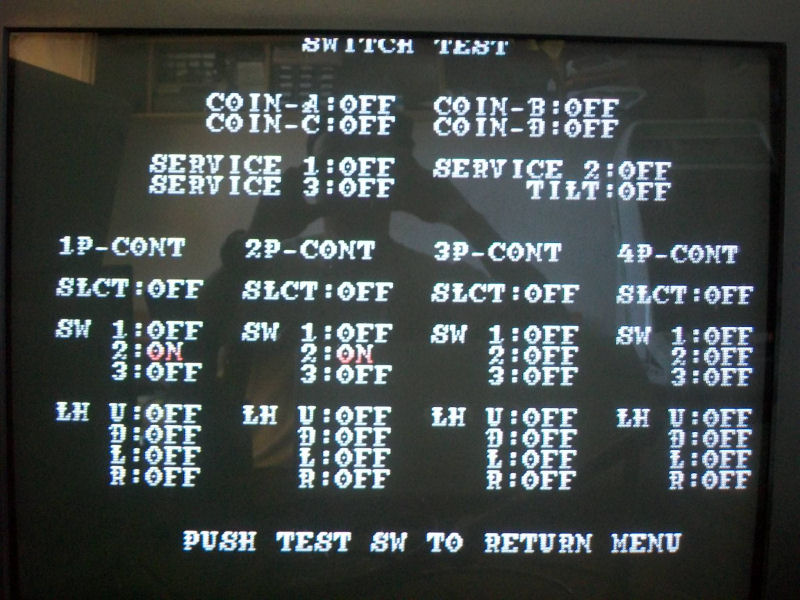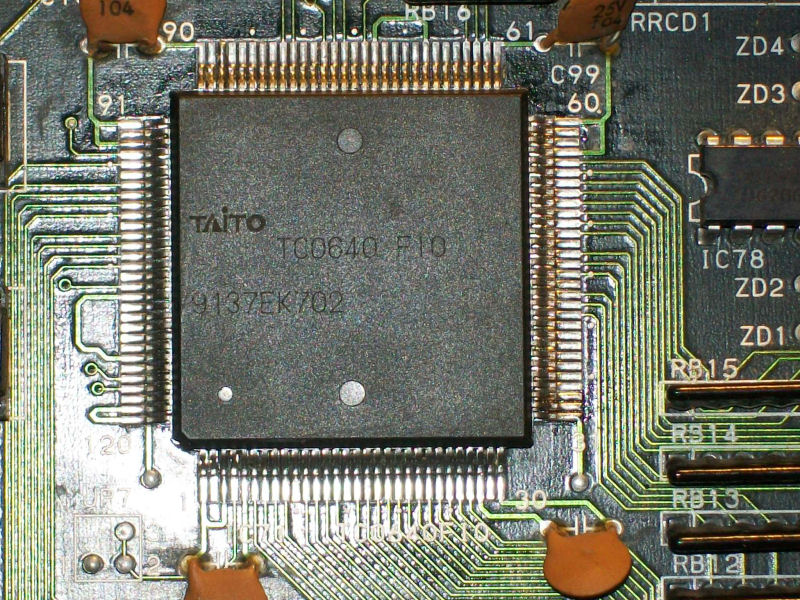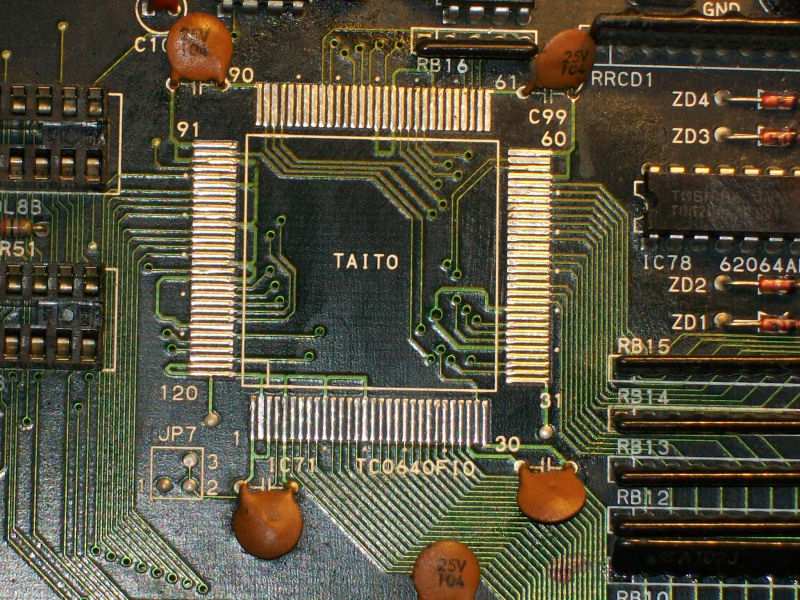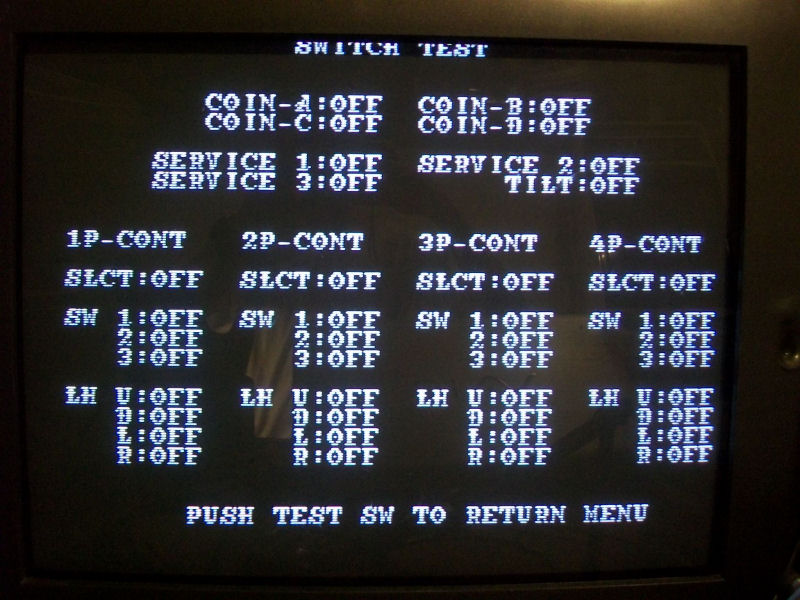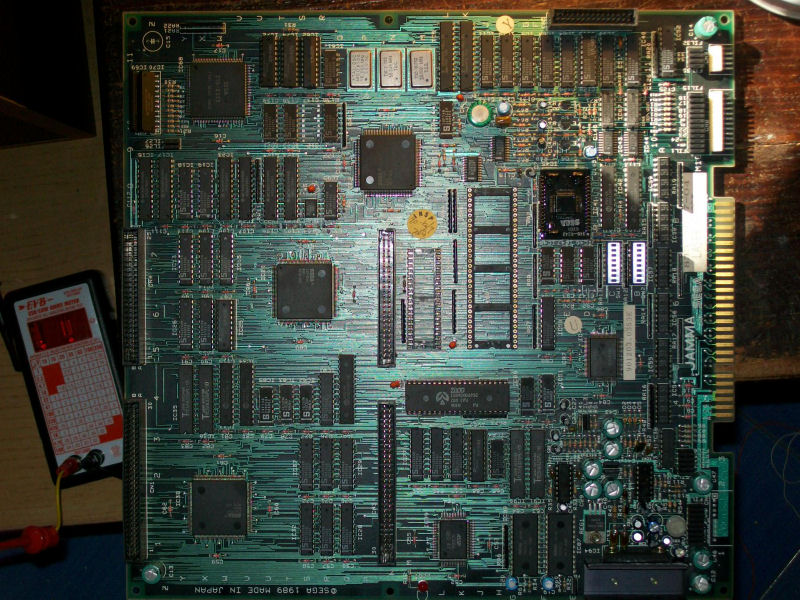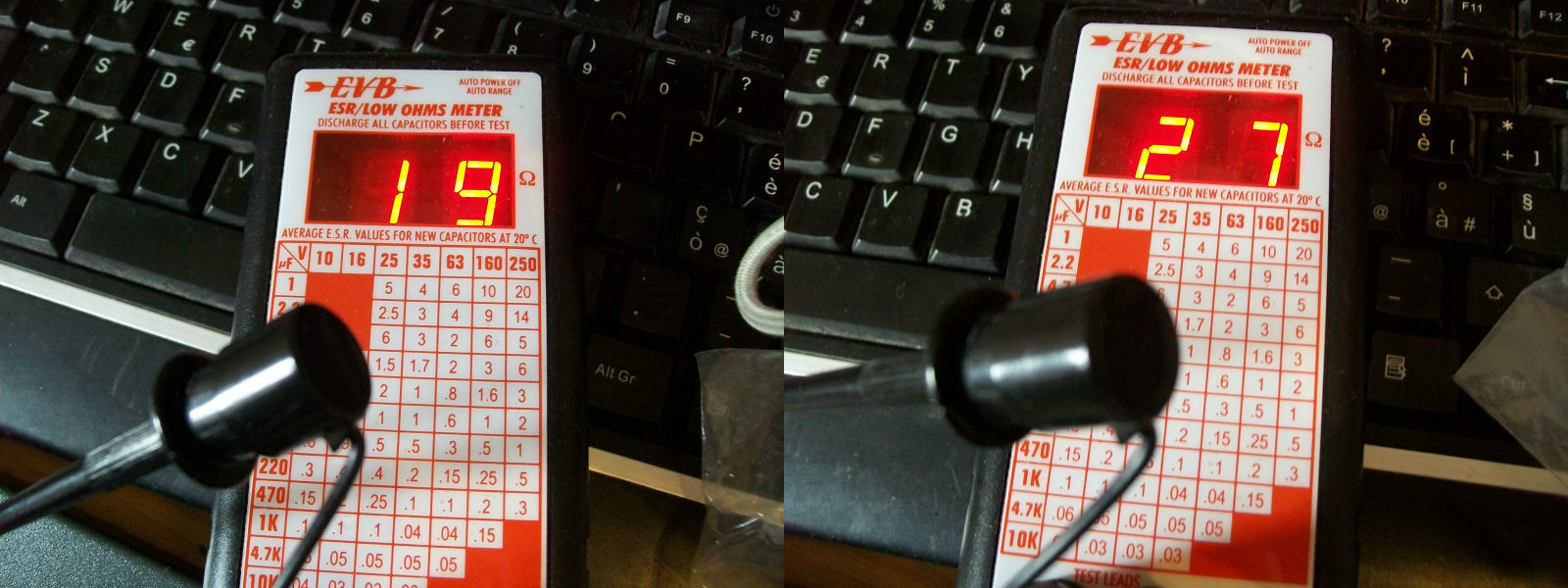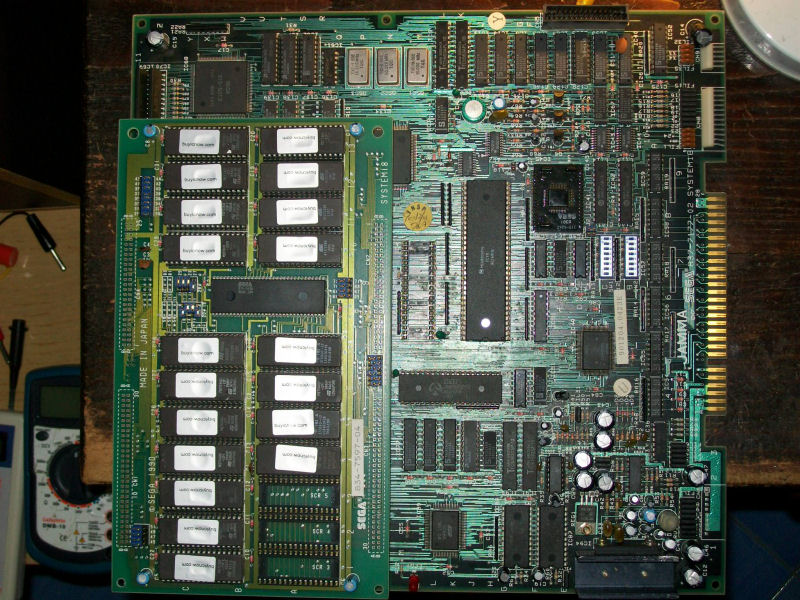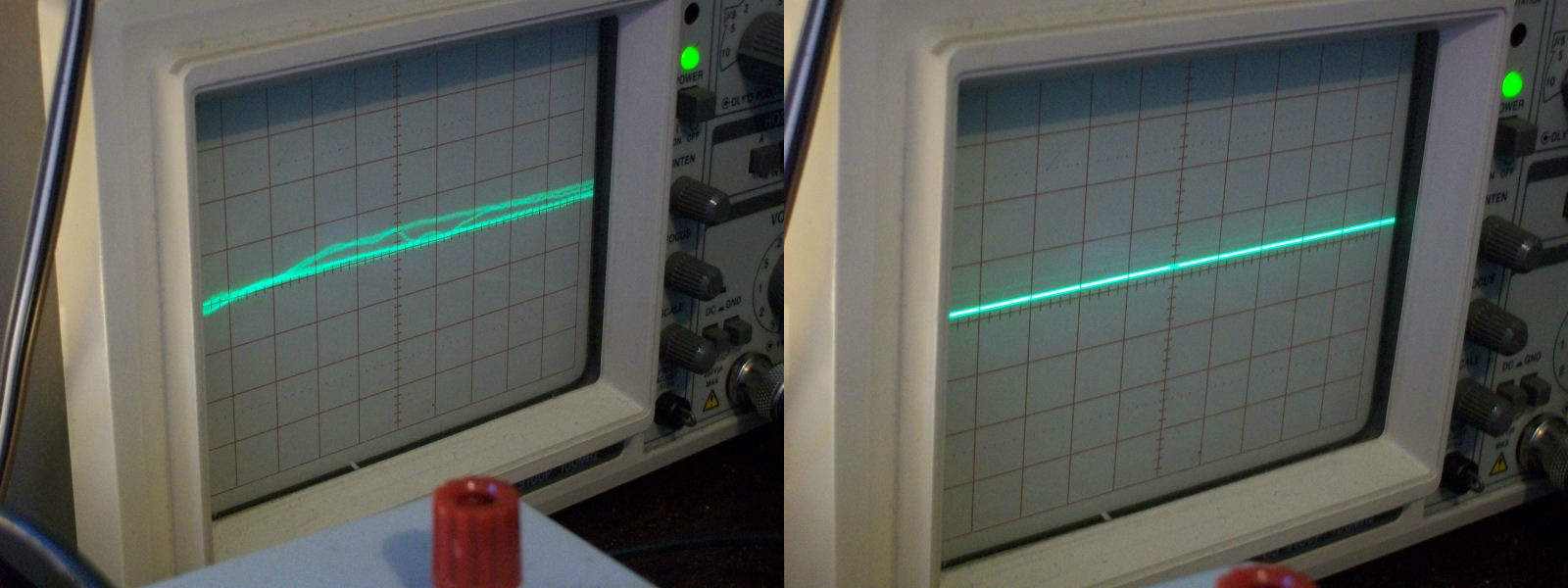Another repair from the same PCB batch of previous logs (three in a row…), this is a Lethal Enforcers PCB in mint condition:
Once powered up I got this static screen:
and a ticking sound sign that board was watchdogging.In these cases first thing to check is the main CPU.Probing pins of the HD63C09E CPU (6809 compatible) I noticed that R/W (PIN32) was completely silent.This is the control line through which CPU decide if write (active LOW) or read (HIGH) DATA onto the DATA bus.The fact that it’s an output and it was inactive made me very suspicious.HD63C09E datasheet says that R/W line can be made in high impedance if BA (PIN6) is HIGH but this was not my case since BA was pulsing LOW.
/WE line of 6264 WORK RAM stuck high.This is generated, indeed, by the /WR signal (PIN32) of main HD63C09E CPU through the BUS master arbitration circuitry.This lead me to desolder the CPU from board and try it in another board.It was really faulty.I socketed it too for easy maintenance:
With a good CPU fitted game obviously booted but showed jailbairs over backgorunds:
This a common problem on this Konami hardware which uses graphics custom ASICs in QFP package.Specifically Lethal Enforcers uses sprite and tilemap generators and these work always in pair.My issue was located on backgrounds so I went to inspect the pair marked 054156/054157 and found some lifted pins on the latter @S8:
I promptly reflowed them with my hot air rework station and goodbye jailbairs!Game 100% fixed.

